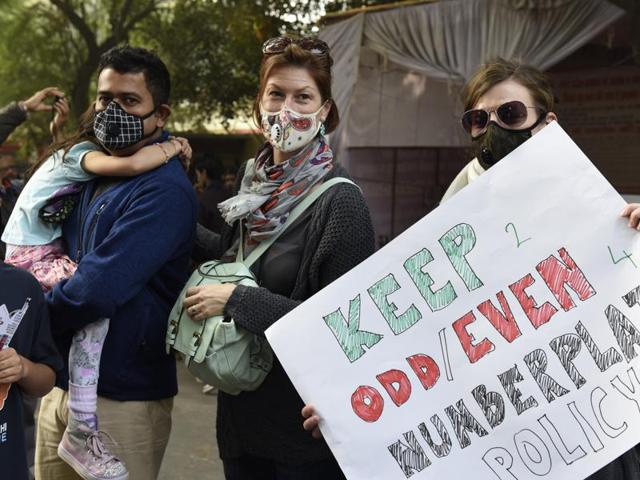Only odd-even rule cannot reduce air pollution in Delhi: CPCB
The CPCB studied air quality in Delhi before, during and after the odd-even experiment. The air quality in Delhi is monitored through a set of Continuous Ambient Air Quality Monitoring System (CAAQMS) and manual stations by National Air Quality Monitoring Programme (NAMP).
The Central Pollution Control Board (CPCB) said there was no clear trend and wide fluctuations in concentration of pollutants during the odd-even experiment, suggesting that no single action can substantially reduce air pollution levels in the capital.

“With no clear trend and wide fluctuations observed in the concentrations, it is evident that the meteorology and emissions from other polluting sources have been major factors impacting air quality of Delhi during the period.
“Overall, it can be stated that while some reduction in air pollution is likely to happen due to odd-even scheme, a single factor or action cannot substantially reduce air pollution levels in Delhi,” says CPCB in a report that analyses air quality in Delhi before, during and after the odd-even experiment.
The board has also called for a “comprehensive” set of actions and an “integrated” approach to make substantial improvement in air quality.
The air quality in Delhi is monitored through a set of Continuous Ambient Air Quality Monitoring System (CAAQMS) and manual stations by National Air Quality Monitoring Programme (NAMP).
The CPCB analysis is based on the data collected by 8 operational CAAQMSs including 4 of its own (Shadipur, Dwarka, Dilshad Garden and Parivesh Bhawan) and other 4 belonging to Delhi Pollution Control Committee (DPCC) (Mandir Masg, RK Puram, Punjabi Bagh and Anand Vihar).
Apart from this, data has also been collected from 7 manual stations of CPCB (Pitampura, Sirifort, Janakpuri, Nizamuddin, Shahzada Bagh, Shahdara and Bahadur Shah Zafar Marg) which operate on alternate days.
The AAP government had implemented the car-rationing experiment from January 1 to 15 with the objective of reducing air pollution in the national capital.



